Using Pictures to Teach Reading Skills Part 2
By Mary Montero
Share This Post:
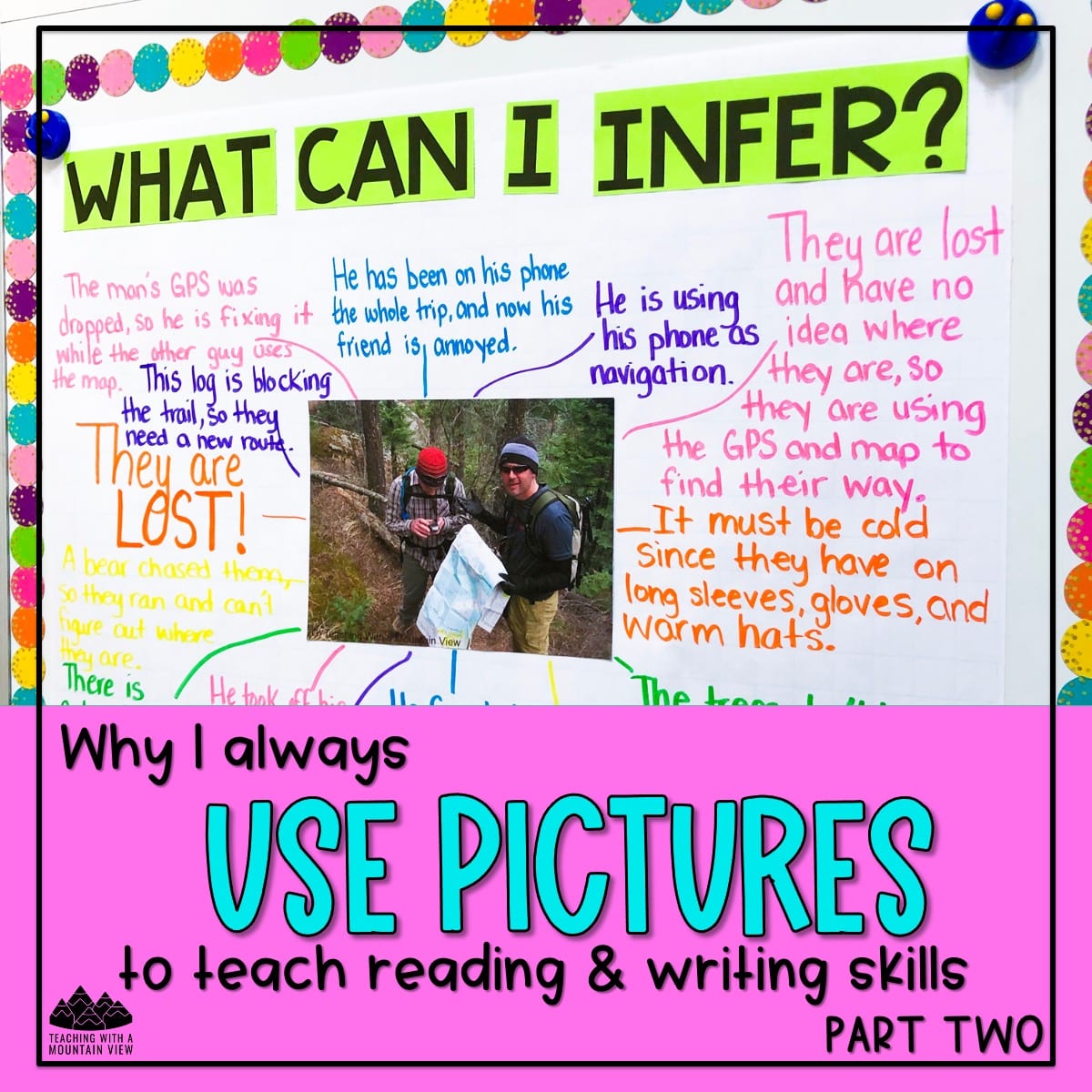
Using Pictures to Teach Reading Skills isn’t a new idea over at Teaching With a Mountain View, but it sure has evolved over the years! Before you read this post, I highly recommend reading my original post about using pictures to teach reading skills. You can find that post HERE. If you want to dig really deep into the archives, I have posts as far back as 2012 that introduce the idea of using Pictures to Teach literal vs. inferential ideas and more! This post is a follow-up to those posts with a few updates and additions.
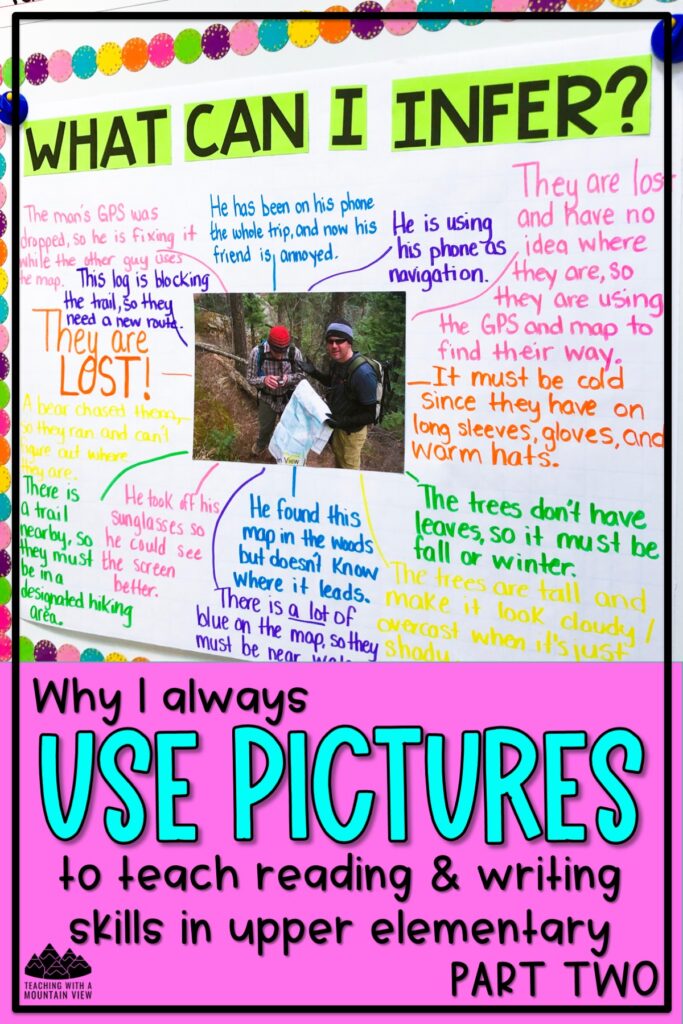
This all started many years ago when I taught third grade. My students had a huge difference in ability levels. Some were fluently reading but not comprehending at all. Others weren’t fluently reading. Some were still learning basic phonics and phonemic awareness skills. Others were fluent as could be and understood every word they read. It truly ran the gamut.
Because of that, I knew I needed a way to make reading skills accessible and engaging to all of my students, no matter what level. During my first year teaching, my husband was out hiking with a buddy and his other friend snapped a picture of the two of them debating which way to go. One was holding a map, the other a GPS, and they both looked LOST. I took one look at that picture and said, “I need that! I’m bringing it to school to show my kids tomorrow.” I printed it out, and the next day, we created this anchor chart:
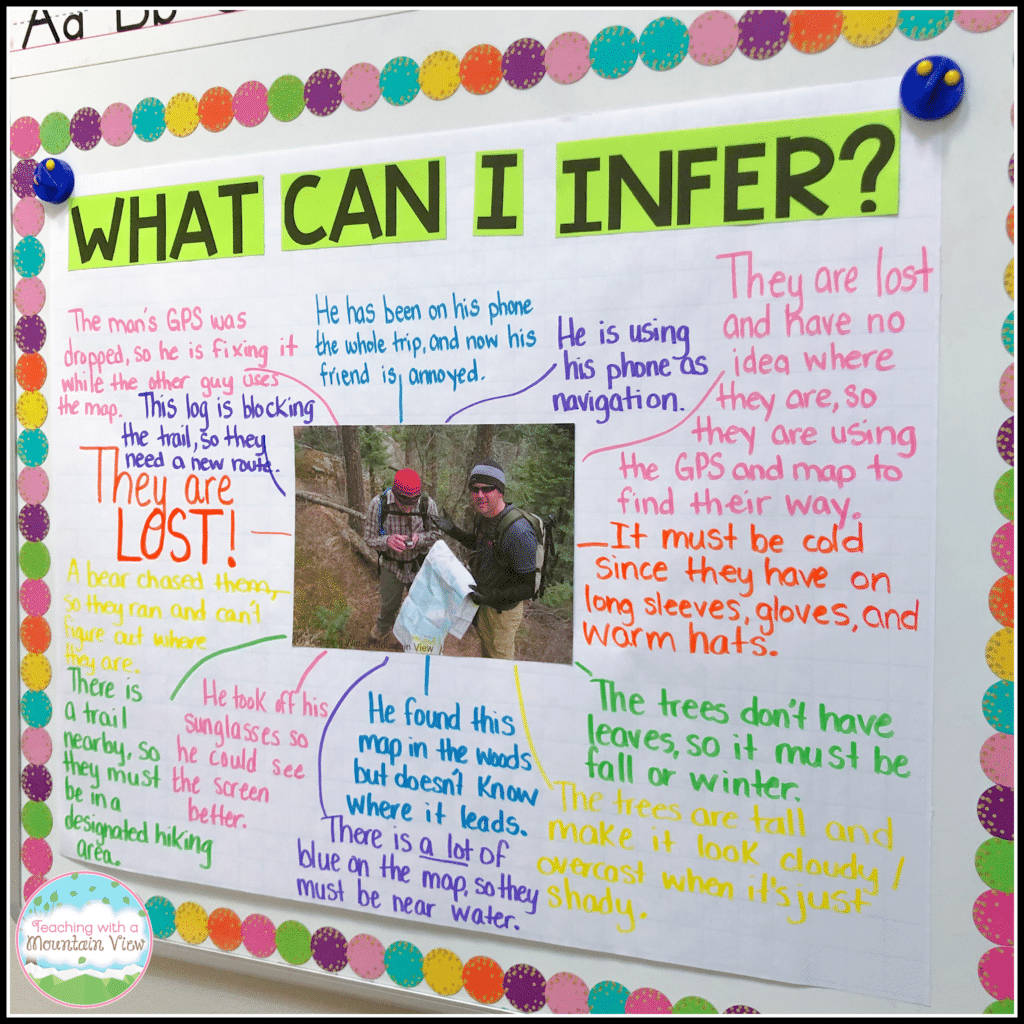
I introduced it by saying, “What can you tell me based on this picture?” The answers started very simply but quickly evolved. This is how that first conversation went…
Student: “Oh! He is wearing a red hat!”
Me: Yes… Go on…
Student: “Yeah! The other guy is holding a map.”
Me: ….
Student: “THEY MUST BE LOST.”
Me: BOOM! Yes!
Student: “OH! And since they’re both wearing hats, it must be cold outside…”
And on and on and on, I heard my students using their literal observations to bust out some solid inferences. It was one of those teaching moments that you never want to end because you can literally see the lightbulbs going off one by one. Ding. Ding. Ding.
Inference Task Cards
After that lesson, I made inference task cards that used pictures, then moved on to text. They quickly became a student favorite in my literacy centers. When I say they became a favorite, I mean they became a favorite of every single student. The ones who could read, the ones who couldn’t, and those in between.
From that point forward, I incorporated pictures wherever I could. I pulled this picture from my honeymoon ATV trip when we were learning about figurative language, and boy did they come up with some creative sentences about it!
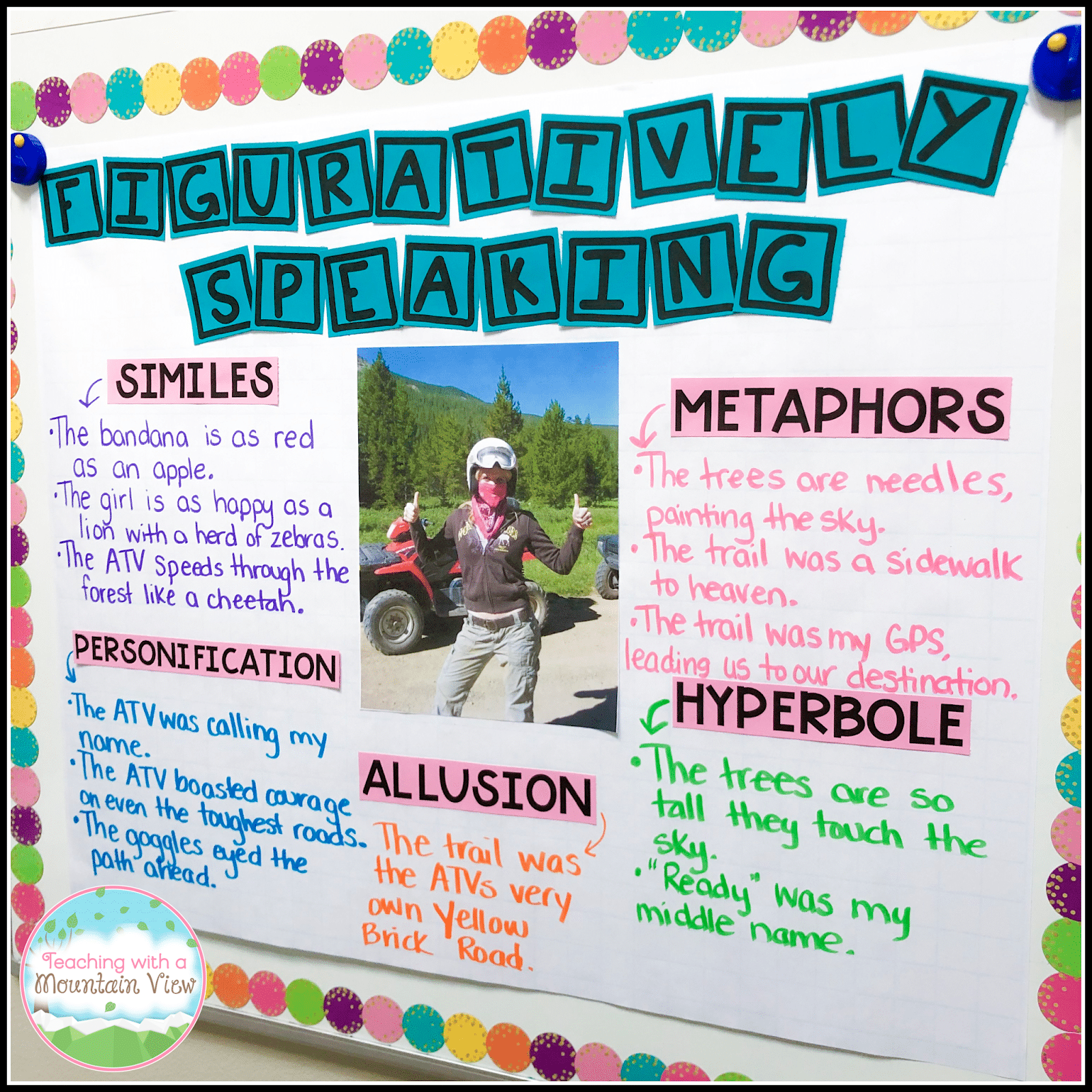
This figurative language anchor chart originally appeared on my blog HERE.
As the years went on, I continued to find different ways to incorporate pictures into my reading instruction. My students would cheer when they saw a blank piece of chart paper with nothing but a picture in the middle of it. “Oh, what are we going to do with THAT picture!?” they’d eagerly ask.
When I was moved to teaching fourth grade, I wanted a way to take what we were doing as a whole class and move it into my small groups and literacy rotations. I also wanted to make the transition from pictures to text more seamless, and that’s when I started creating Using Pictures to Teach printable resources.
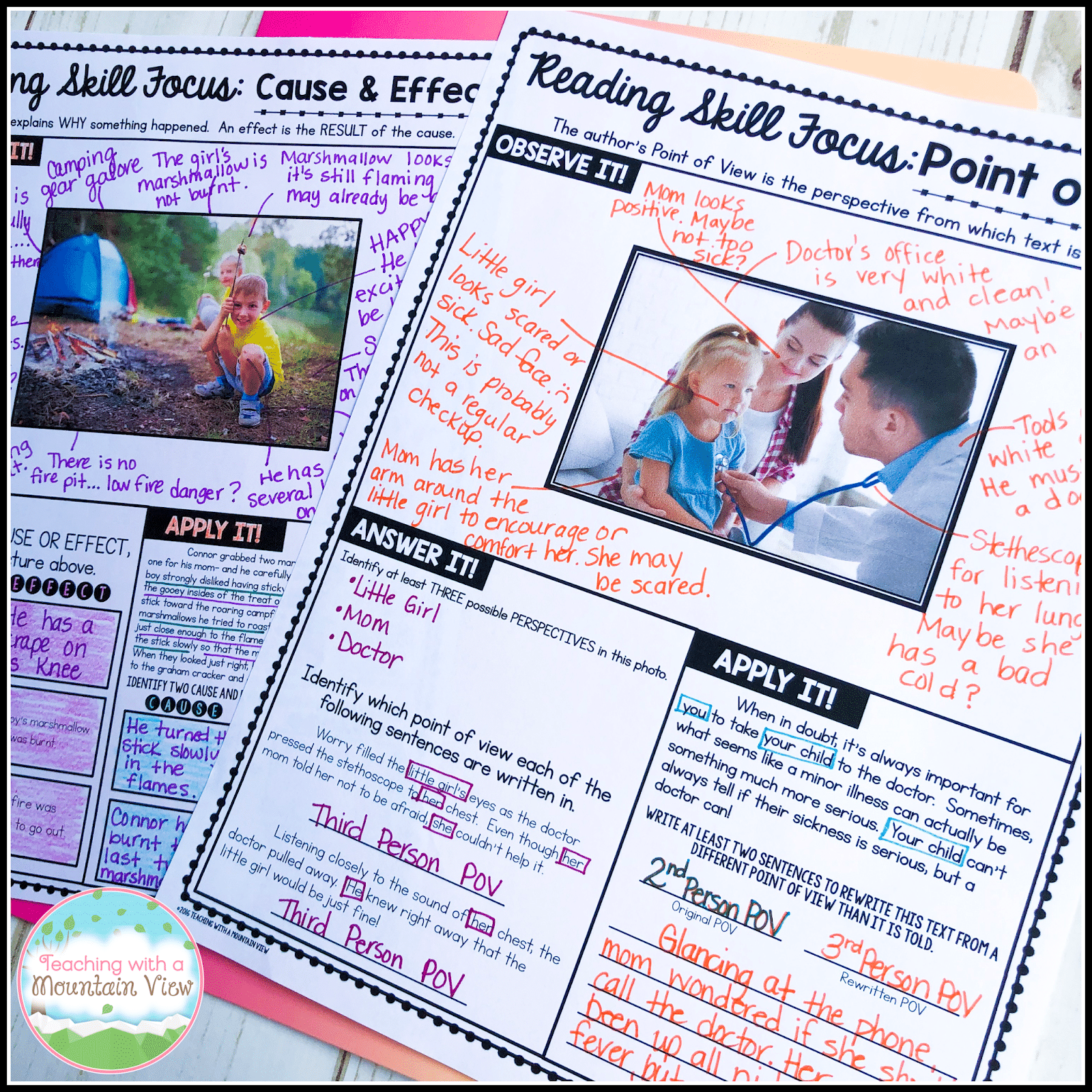
As my teaching continued to evolve, I moved toward reviewing multiple reading skills with one picture. The beauty of this technique is that they are making inferences for every single task we complete, but reviewing other key reading skills at the same time.
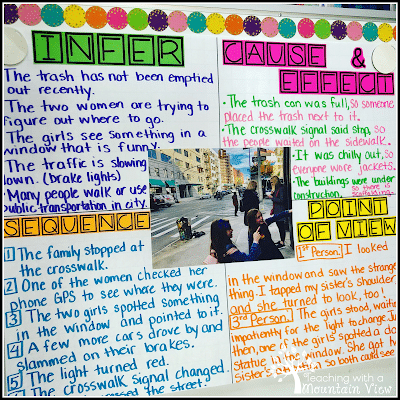
My students loved these just as much! They took a little bit more time to complete since we were reviewing multiple skills, but that made it perfect to work through over the course of a few days. Sometimes, I would put one of these in a reading center and have each group complete one section and then discuss it as a whole class when we were done.
Every time I post one of the anchor charts like the one above, I get questions about where I find my pictures, how I come up with which skills to work on, etc. That’s why I created a new set of open-ended Using Pictures to Teach Printables that look just like the anchor chart above. They are ready to go! You can project them and complete them whole class, you can assign the digital version in Google Classroom, you can print them and have students complete them individually or with each other. The options are endless, but there are ten and they are all ready-to-use!
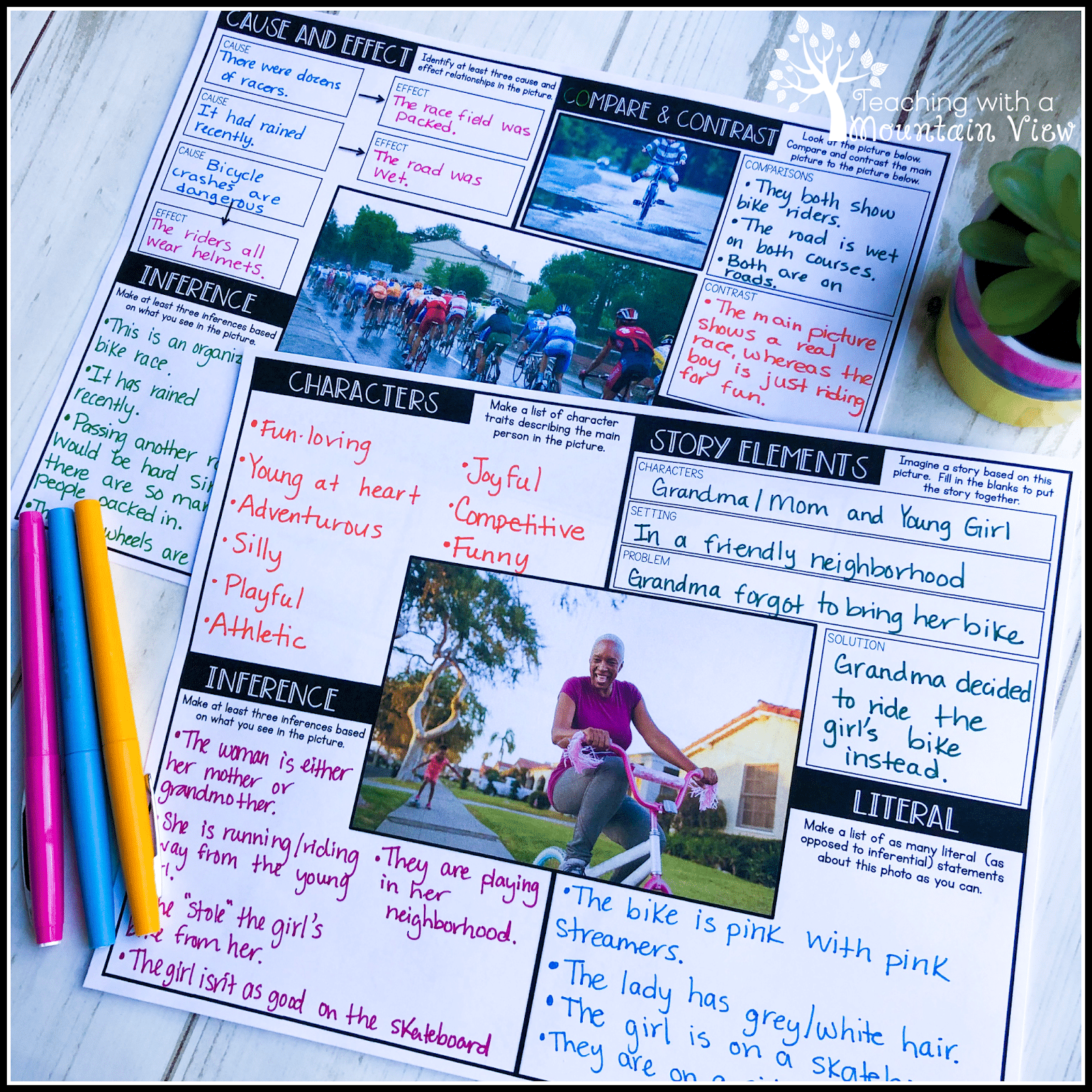
Learn more about this resource HERE!
I am not exaggerating when I say that using pictures to teach reading skills is one of the best things I have implemented in my classroom. It not only changed the way I teach, but it changed the way my students thought about life, reading, and reading skills.
I’d love to see your anchor charts that you create with your students! Don’t forget to tag me in them @teachingwithamountainview on Instagram.
Happy Teaching!
Mary Montero
I’m so glad you are here. I’m a current gifted and talented teacher in a small town in Colorado, and I’ve been in education since 2009. My passion (other than my family and cookies) is for making teachers’ lives easier and classrooms more engaging.











